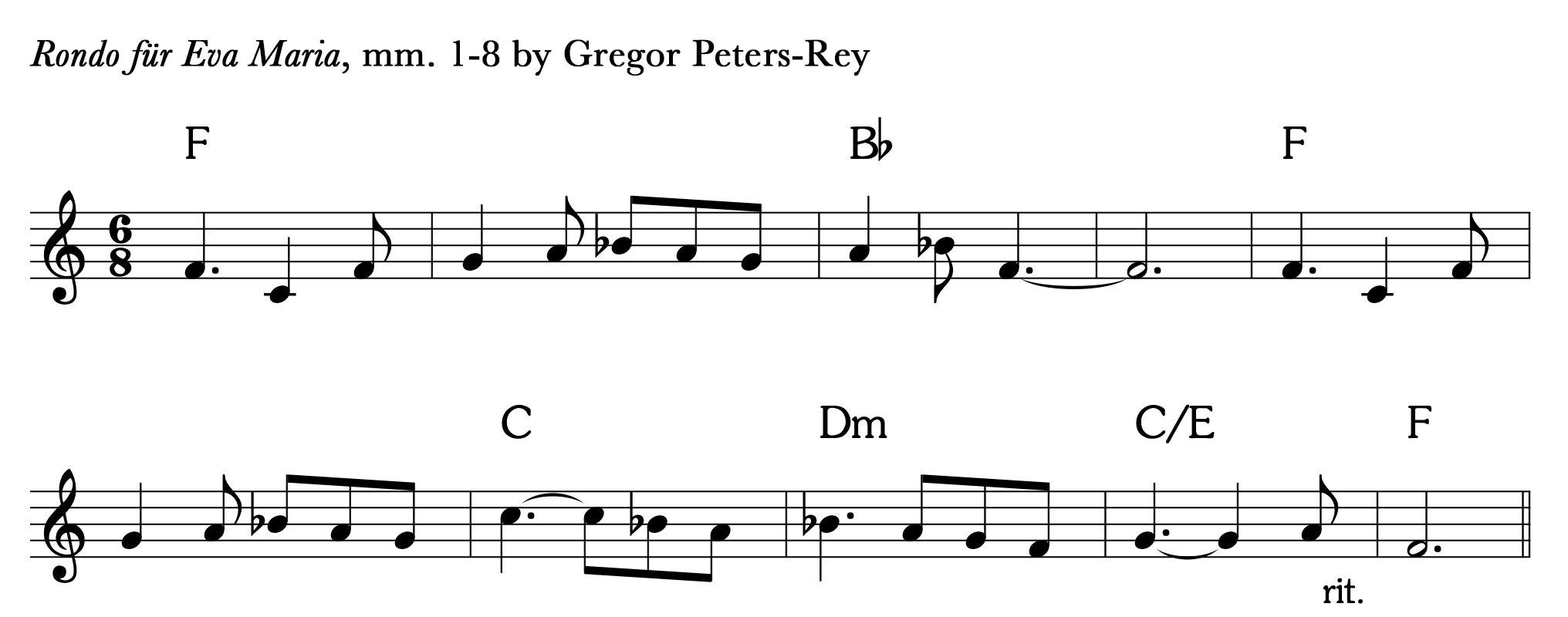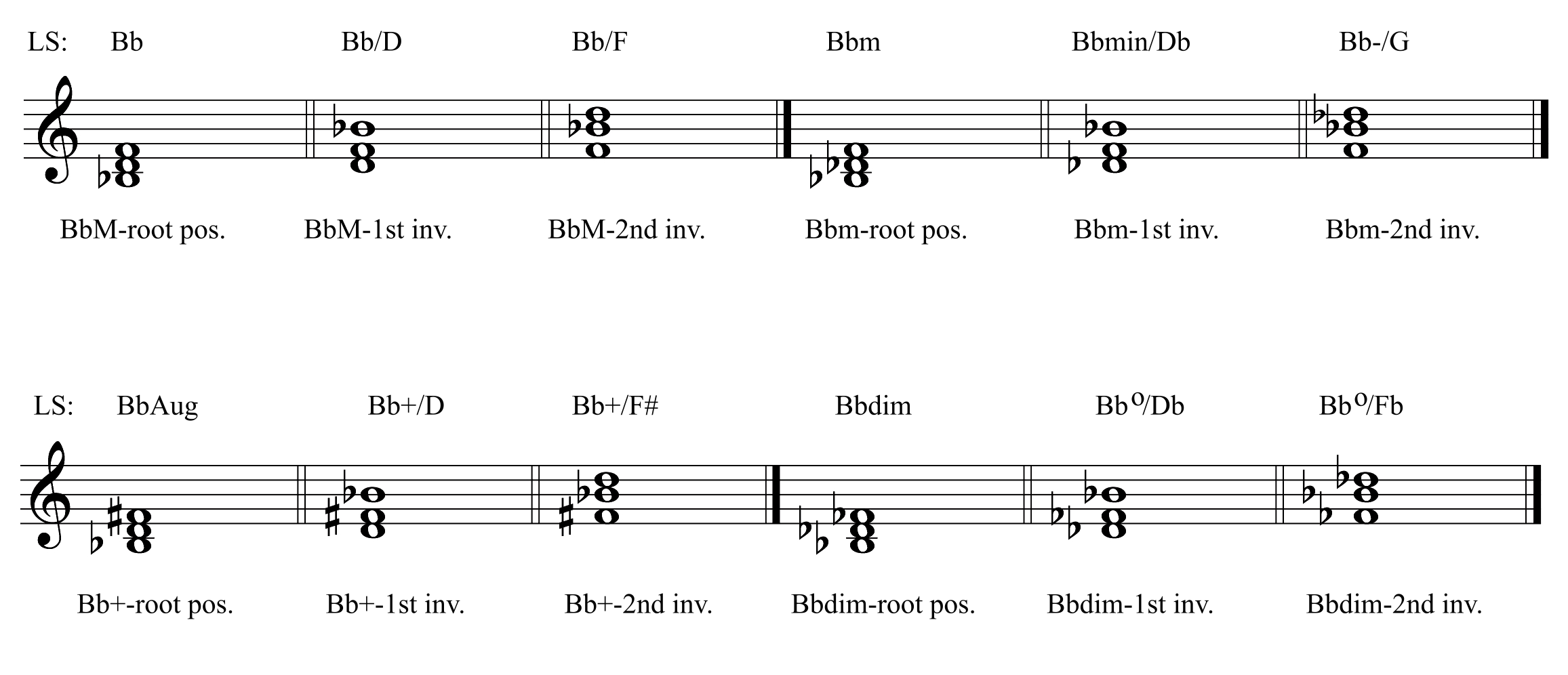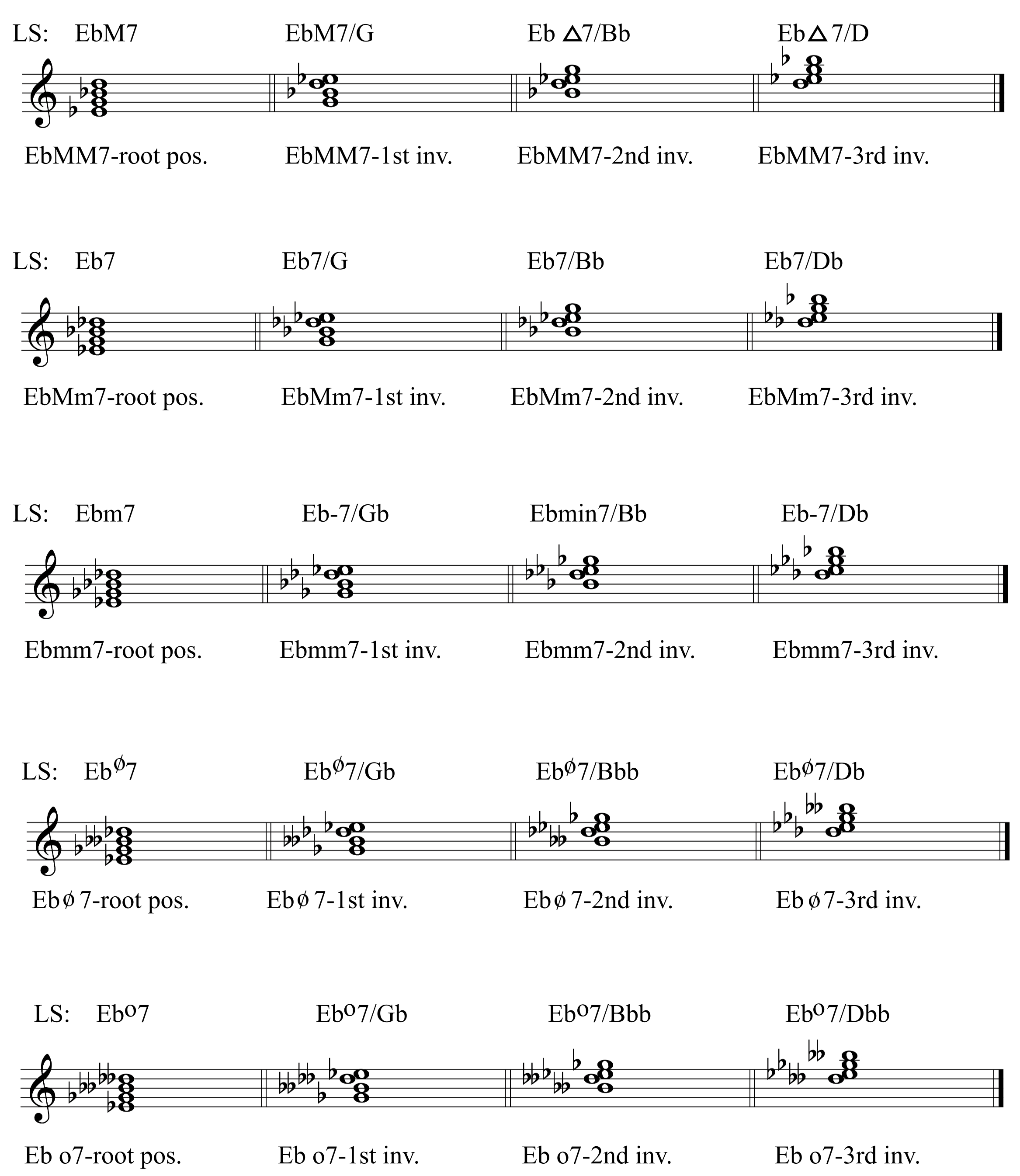5.3 Lead Sheet Notation: Tutorial
Lead-Sheet Symbols
Lead sheet symbols were developed for use in jazz and other popular music as a way to quickly show chord changes and as a way to allow those who do not read music to know what chords to play at specific times. Lead sheet symbols are typically drawn above the melody on the staff. The chord symbols tell the performer what chords to fill in to accompany the melody line. The lead sheet symbols specify the root of the chord, the quality of the chord, and the inversion of the chord. Lead sheet symbols also indicate the rate at which chords change. Once a lead sheet symbol is marked in the score, the chord stays the same until a new lead sheet symbol is indicated. Lead sheet symbols allow the performer to have a large degree of freedom for improvisation when playing the music. Performers playing the chords would determine what rhythm, articulation, octave, voicing, doubling, and instrumentation to use.

Citation: Rondo fur Eva Maria by Gregor Peters-Rey published under a Creative Commons Attribution license, imslp.org
Lead Sheet Notation
Lead sheet symbols contain the following 4 things in this order:
- The letter name of the root of the chord written using capital letters (remember to include accidentals when needed)
- A symbol that indicates the quality of the chord when needed
- 7 if the chord is a 7th chord
- A slash followed by the lowest sounding pitch for any chords in inversion
The most common symbols for chord qualities include:

The chart below shows the common lead sheet symbols used for triads in all inversions. The lead sheet symbols are listed above each chord and the chords and inversions are listed below.

The chart below shows the common lead sheet symbols used for 7th chords in all inversions. The lead sheet symbols are listed above each chord and the chords and inversions are listed below.

Lead-Sheet Symbols in different editions
- The specific symbols used by a composer or arranger may differ from person to person, so it’s important to be familiar with the possible symbols for each type of chord.
- Editors and arrangers routinely make chord substitutions to simplify or complicate the harmony as they see fit, so different editions of the same piece might contain different chords or chord variations.
When might lead sheet symbols be useful to you in your musical life? Add lead sheet symbols to the music you are currently working on or studying. Does seeing the lead sheet symbols help you to better understand what is happening in the music while you play? Does it change the way you listen to the music, yourself, or to the accompaniment parts if you are playing in a group? How could adding lead sheet symbols help you as a teacher? What would seeing lead sheet symbols allow a student to do that they might not do on their own?

